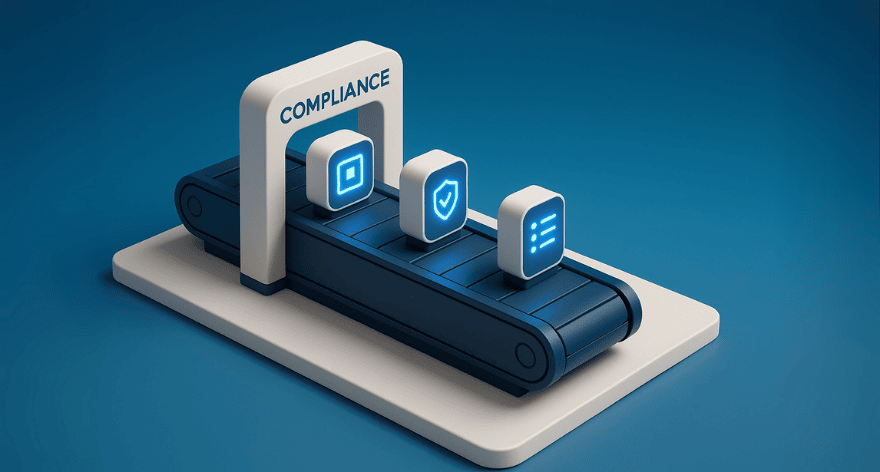Many organizations still treat compliance as if it is a formality. A check mark here, a signature there, and you're done. But anyone who thinks that a quick check is enough is playing with fire. Compliance is not a snapshot in time. It is a process that is constantly evolving.

The misconception of the quick check
A compliance check often feels like reassurance. A new customer or supplier is checked, everything seems to be in order, and the collaboration begins. But that's when the real work starts. Legislation is constantly changing. New sanctions, stricter anti-money laundering rules, and more stringent reporting requirements follow each other in rapid succession. What was acceptable yesterday may already be a violation today.
Business partners change too. A new UBO, sudden payment problems, or negative signals in the market can pop up at any time. If you rely solely on the data from an initial check, you are essentially working blind.
The price of superficiality
The real danger of a quick check is that you are deceiving yourself. You think you are safe, while the risks are piling up.
Financial: fines for non-compliance can run into the millions, and legal claims can drag on for years.
Reputation: A single incident can destroy years of trust among customers, investors, and employees.
Operational: if a key supplier is no longer compliant, the entire chain comes to a standstill and the continuity of your business is put under pressure.
In short, those who rely on a momentary snapshot are putting the future of their organization at risk.
Why checks expire faster than you think
A compliance check is always a snapshot in time. But reality changes faster than many organizations realize. Ownership structures, financial health, payment behavior, and even reputation can change in a short period of time. Laws and regulations are changing just as quickly. New obligations, modified reporting requirements, and stricter controls are now the norm.
Those who rely solely on a check at the start of a collaboration are looking backward rather than forward. Decisions are made based on information that is no longer current in practice.
How to do it right: from ticking boxes to structural insight
Those who take compliance seriously turn it into a structural process. This requires four building blocks.
Continuous monitoring
Relationships are constantly changing. Only by maintaining continuous insight can you identify new risks in time and take immediate action. Alerts and notifications help you make decisions based on facts, not assumptions.
Interesting read: Reputation at stake? Here's how UBO monitoring helps you stay ahead of risks
Reliable data
Compliance stands or falls with data quality. Incomplete or outdated information provides false security. Only with up-to-date and validated data can you accurately assess risks and make the right choices.
Interesting read: What data do you need for an effective compliance process?
Automate
Manual checks are not scalable. Technology makes it possible to monitor large numbers of relationships in real time and immediately flag any deviations. This makes risks visible without causing the workload to explode.
Culture and awareness
Compliance is not the responsibility of a single department. It requires organization-wide accountability. Only when employees understand that compliance directly affects continuity and reputation does it become truly effective.
Compliance as a competitive advantage
A lot of companies see compliance as a burden. But the organizations that do it it right are actually leading the way.
- They gain the trust of customers, investors, and regulators.
- They grow more easily internationally because they comply with local and international legislation.
- They are more agile and resilient in the event of unexpected changes in the market.
Compliance thereby becomes more than risk management. It becomes a strategic advantage.
Conclusion: stop with short checks, opt for the long term
A quick compliance check may seem efficient, but in reality it is a pitfall. Legislation changes, markets move, and risks arise unexpectedly. A one-time check is never enough.
So the right question is not, “Have you checked this yet?” but “How do we ensure that we keep an eye on this?”.
Compliance is not a sprint that you can tick off and forget about. It is a marathon that requires reliable data, smart monitoring, and organization-wide responsibility. Only then can you run that marathon with confidence and safeguard your reputation, continuity, and growth.
